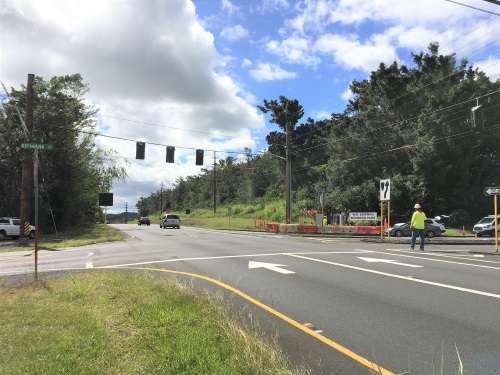The Hawaii Department of Transportation is expanding the installation of Blyncsy Intersect Connected Vehicle units to 16 state-owned traffic signals in East Hawaii in cooperation with venture capital firm Elemental Excelerator – sensors that calculate travel times between units by anonymously collecting data from Bluetooth-enabled devices in passing vehicles.
[Above photo by the Hawaii DOT.]
The agency added that installation of connected vehicle sensors on the remaining 14 state-owned traffic signals in West Hawaii should be complete in late November.
The Hawaii DOT and the County of Hawaii said in a statement that they plan to use the data from those sensor units to optimize traffic signal timing but also expect them provide key navigation information to CAVs – short for connected and autonomous vehicles – in the near future.

The Hawaii DOT said data from the connected vehicle sensors is similar to traffic information currently available from navigation apps like Google and Apple Maps, but is more accurate as it captures data from units installed directly on traffic signals.
The agency added that Bluetooth data from the Blyncsy sensors – currently broadcasted to vehicles enabled to receive Dedicated Short Range Communications or DSRC information – is “anonymized” through a process where the data is encrypted and randomly assigned unique identifiers that are not connected to any personal information.
Hawaii DOT anticipates the data available through the connected vehicle sensors will make corridor management more efficient by providing real-time information only previously available through timed drives through subject corridors.
The installation of the Blyncsy Intersect Connected Vehicle units – at a total cost of $57,700 for all 30 units – is the first step in preparing Hawaii Island roads for CAVs, the agency added.
 States
States
NCDOT Staff Participate in ‘Explosive’ Technical Training
December 19, 2025 States
States

